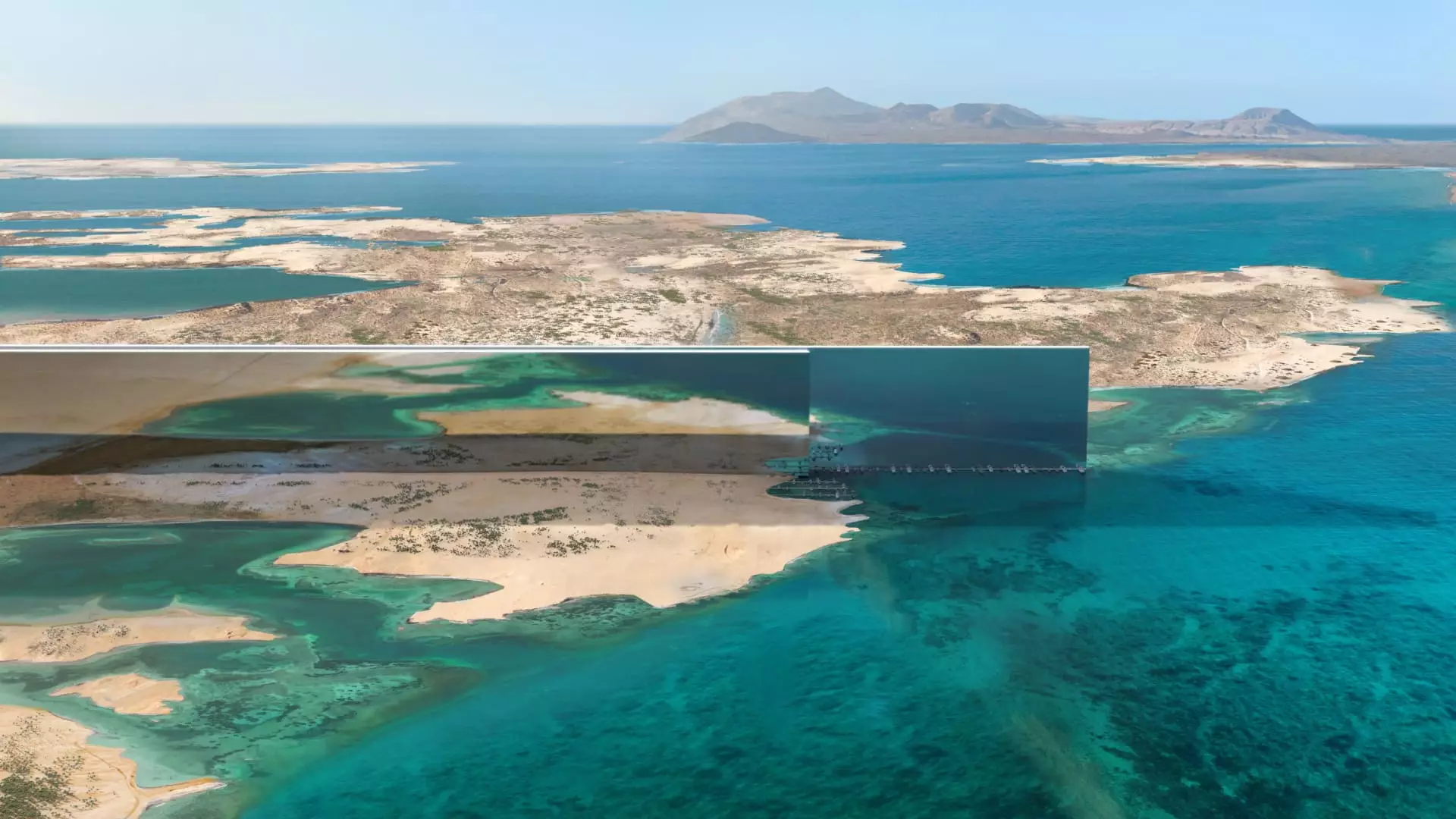Neom, Saudi Arabia’s audacious attempt to craft a utopian metropolis like no other, encapsulates the relentless human desire for innovation and dominance. However, beneath the shimmering veneer of glass skyscrapers and cutting-edge technology lies an unsettling truth: the project, once hailed as a flagship of futuristic urban planning, is now teetering under the weight of practical limitations and economic realities. The recent strategic review commissioned by the Saudi sovereign wealth fund reveals a sobering acknowledgment that the immense ambitions of The Line—and by extension Neom—may be at risk of becoming an elaborate mirage rather than a tangible achievement.
The core issue isn’t simply financing or technological feasibility but a profound disconnect between visionary aspirations and ground-level realities. For years, Hassan Ali, a critic of massive megaprojects, has argued that such ventures tend to romanticize the future at the expense of present-day feasibility. Now, as global oil prices decline and public coffers tighten, this dissonance threatens to unfurl the very foundation upon which Neom rests. It appears the fantasy of a perfect ultra-modern city is colliding with the stark truth that economic stability and technological capabilities are not yet aligned with the grandeur of the design.
The Mirage of Technological Utopia and Economic Viability
At the heart of Neom’s appeal is its promise—to revolutionize urban living through radical innovations: high-speed trains carving through desert sands, skyscrapers piercing the clouds, and a meticulously planned infrastructure that aims to be the epitome of smart city evolution. Yet, critics now question the feasibility of these ambitions. Is the technology advanced enough to realize the project’s lofty goals? And more critically, can Saudi Arabia sustain such an expensive endeavor without jeopardizing its fiscal health?
The strategic review, likely focusing on technical viability, funding, and economic impact, signals a recognition that previous projections may have been overly optimistic—if not outright fantasy. The fact that such an evaluation is necessary at this stage suggests overconfidence and perhaps an underestimation of the project’s complexity. It raises a crucial question: are the architects of Neom guilty of perpetuating a “yes-man” culture—where inflated projections promote project approval while hiding uncomfortable truths? This pattern isn’t new in mega-projects worldwide, but it becomes especially perilous when national pride and immense financial interests are on the line.
Furthermore, the financial figures are staggering. An estimated $1.5 trillion has been earmarked for development—an amount that seems increasingly unsustainable amid shrinking revenues from oil. Falling oil prices have exposed the vulnerabilities of Saudi’s economic dependency on hydrocarbons. As global energy markets shift and the kingdom faces mounting budget deficits, the once-gleaming vision of Neom appears increasingly precarious, if not outright extravagant.
Leadership Failures and the Cost of Overconfidence
While the boldness of The Line and Neom as a whole is undeniable, critics argue that leadership has failed to ground these visions in reality. The project’s architects, both in Saudi Arabia and among international consultants, have often been criticized for overly optimistic forecasts—an echo of a wider pattern of wishful thinking prevalent in high-stakes developmental megastructures. Such optimism, while inspiring on paper, can lead to a dangerous detachment from market realities and technological constraints.
The criticism is not just about overpromising but also about the lack of strategic ownership and responsibility among the firms involved. Without accountability and honest assessments, the project risks becoming a sprawling monument to hubris—an expensive folly that will drain Saudi resources without delivering meaningful outcomes. As Tarik Solomon, an industry veteran, pointed out, establishing trust and managing expectations is vital for success. When those elements are compromised, even the most ambitious projects become vulnerable to failure.
In tandem with this realization, cost-cutting measures such as layoffs and scaling back plans show that the leadership is finally recognizing that the old playbook—relying on endless investment—must be replaced with a more pragmatic, sustainable approach. The reality is that the grandeur of Neom no longer matches the current economic climate, forcing a reevaluation of priorities. Whether these reductions will severely compromise the project’s core vision remains to be seen, but the trend indicates a shift from idealistic innovation toward survivalist pragmatism.
The Future of Neom: From Utopian Dream to Realistic Prospect?
Is there room for hope amid these turbulent reflections? Perhaps. The initial vision of Neom was rooted in a genuine desire to push boundaries and reshape the Saudi economy. But such aspirations cannot be divorced from pragmatic planning, especially in a world where geopolitical and economic stability is increasingly fragile.
The risk now is that Neom, once the shining jewel of Vision 2030, may end up a costly lesson—an ambitious project that failed to adjust to the realities of a changing world. The new emphasis on financial soundness and strategic reassessment could either salvage its core ambitions or consign it to a prolonged and uncertain development phase. What remains certain is that boldness must be paired with realism if Saudi Arabia truly wishes to diversify successfully without repeating the mistakes of overreach and fiscal imprudence.
In essence, the story of Neom is a cautionary tale about the pitfalls of seductive idealism in the face of pragmatic constraints. While the kingdom continues to aspire for greatness, it must learn that sustainable innovation requires humility, honest oversight, and an unwavering acknowledgment of the limits adversity imposes on even the most grandiose plans. Whether Neom can transform from an impractical fantasy into a viable urban reality hinges on the leadership’s ability to recalibrate expectations and embrace a more grounded vision—before the city’s future is forever lost in the shifting desert sands of ambition.

